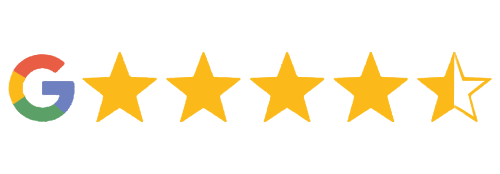Getting a mortgage can be struggle.
Unfortunately, getting someone off of a mortgage can also be.
But how do you remove someone from a mortgage?
Read on to find out.
What is a joint mortgage?
A joint mortgage means two or more named borrowers on the loan.
Both named borrowers are equally responsible for meeting the repayments each month. This still applies if they separate or divorce.
During the mortgage application, the lender will consider their incomes and personal situations.
Even if only one of you lives in or owns the property, you are both still liable to repay the mortgage.
One benefit is that joint borrowers may find it easier to get a bigger mortgage. After all, they have two incomes.
But it also means that if one person stops paying, the other borrower must meet monthly payments.
Alternatives to getting a joint mortgage
Sole mortgage
One person applies and takes out the mortgage in their name only. This means they have individual responsibility for the repayments.
The other person is not liable if they fail to pay the mortgage. A potential downside is that buying on one income may limit your borrowing amount.
Tenants in common
Tenants in common is one of the main alternatives to joint tenancies.
This allows buyers to jointly own property while holding different property shares.
For example, you may agree on a 60/40 or 70/30 split based on who contributes more to the deposit.
The main benefit is buyer can get a mortgage secured against their property share.
One party’s credit history does not impact the other. If one wants to sell up, they can do so without affecting the rights of the remaining owner.
They can also state in their will what should happen to their share when they pass away.
Potential drawbacks are that solicitor fees may be higher. And determining each party’s share in the eventual sale can get complicated.
Banks also tend to prefer lending to joint mortgages. But tenants in common allows for separation of ownership and borrowing liability.
Guarantor mortgage
A guarantor is a third party who takes a secondary position on mortgage obligations.
They pledge to cover any missed repayments by borrower.
Acting as a guarantor may help someone you are buying the property with. But it cannot secure a mortgage in their sole name. This could be due to factors like starting a business or being self-employed.
Legally, the guarantor can be asked to pay up the owed amounts. In practical terms, their commitment often reduces over time. The primary borrower builds up their credit profile – making default less likely.
Pros and cons of a joint mortgage
Pros
- I may be able to borrow more money with two incomes
- Often needed for first-time buyers using Help to Buy schemes
- Strengthens your application if one buyer has a poor credit score
- Shared responsibility and costs with your partner
Cons
- Both are liable for total mortgage repayments
- Need to rely on the other party to help make payments
- Difficult to remove a name if circumstances change
- Relationship breakdowns can get complicated
On balance, joint borrowers often find it easier to get on the property ladder. But it requires trust and carries financial risk if one person cannot or does not pay.
Is it possible to remove a name from a joint mortgage?
It’s sometimes possible to remove names from joint mortgages by transferring the mortgage into one name.
However, this is not straightforward. And mortgage lenders are typically reluctant to allow it.
Here are the key things to know:
Remortgaging is usually needed
The person keeping the mortgage will likely need to remortgage the property. This means going through affordability and credit checks to qualify for a new loan based.
A lender agreement is vital
The original lender must agree to remove the other borrower from the mortgage. Not all lenders allow this, so you may need to switch to a new lender.
Consent from both parties
The other mortgage-holder must agree and sign authorization forms to remove one borrower. Their credit file will show the closed account.
Property rights get complicated
Even if no longer liable for the mortgage, the removed may still have a legal entitlement to the property. This needs addressing.
This depends on marital status and how the deed is held.
So, while taking someone off a joint mortgage is possible, it can be a complex and costly process.
The person remaining on the loan must be able to afford repayments alone. Alternative options may be more straightforward.
Reasons to try to remove a name from a joint mortgage
There are a few situations where you may need or want to remove an individual from a joint mortgage:
Relationship or marriage breakdown
Removing one name may be the best solution. This is especially true if you and your former partner can no longer afford payments.
It avoids continuous disputes over money and responsibility. Be aware that other property rights still need deciding.
One borrower is declared bankrupt
If one mortgage holders goes bankrupt, it can affect your credit rating and ability to keep up with payments.
Taking their name off the loan can prevent further money problems. However, it still leaves issues around the rights to the actual property to settle.
Emigration overseas
If your joint mortgage holder emigrates, removing them means you takes complete control.
Be conscious that the person leaving is giving up their potential property rights and investment.
One borrower cannot contribute
Suppose a change of circumstances, such as losing a job, illness or having kids, means one borrower can no longer afford to pay their share.
In that case, the other person may seek to take sole responsibility for mortgage payments. This provides clarity going forward but may not be quickly approved by lenders.
Relationship breakdown but want to keep property
Unmarried joint borrowers who split up often still wish to retain ownership of the mortgaged property for their security.
Transferring the mortgage into the name of whoever will reside there provides future stability.
Removing someone from a joint mortgage simplifies liability and payments for those remaining on the loan.
However, mortgage lenders rightly set a high bar to approve it due to the financial complexities. Seeking legal and financial advice is highly advisable before progressing too far.

















